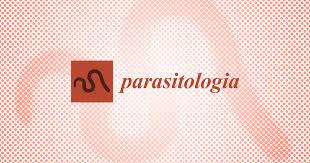Ver ítem
- xmlui.general.dspace_homeCentros e Institutos de InvestigaciónCICVyA. Centro de Investigación en Ciencias Veterinarias y AgronómicasInstituto de PatobiologíaArtículos científicosxmlui.ArtifactBrowser.ItemViewer.trail
- Inicio
- Centros e Institutos de Investigación
- CICVyA. Centro de Investigación en Ciencias Veterinarias y Agronómicas
- Instituto de Patobiología
- Artículos científicos
- Ver ítem
Discovery of antigens and cellular mechanisms in the protozoan parasite sarcocystis aucheniae using immunoproteomics
Resumen
Sarcocystis aucheniae is a coccidian parasite that produces macroscopic sarcocysts in South American camelid (SAC) muscles and causes a disease known as SAC sarcocystosis. This parasitosis hampers the commercialization of llama and alpaca meat, a vital economic activity in the Andean regions. No control or prevention methods are available, and diagnosis is based on postmortem visual inspection of carcasses. The aim of this study was to identify S.
[ver mas...]
Sarcocystis aucheniae is a coccidian parasite that produces macroscopic sarcocysts in South American camelid (SAC) muscles and causes a disease known as SAC sarcocystosis. This parasitosis hampers the commercialization of llama and alpaca meat, a vital economic activity in the Andean regions. No control or prevention methods are available, and diagnosis is based on postmortem visual inspection of carcasses. The aim of this study was to identify S. aucheniae B-cell epitopes suitable for the development of diagnostic methods for SAC sarcocystosis. To this end, sarcocyst immunoreactive protein bands were analyzed via mass spectrometry, and proteins in each band were identified in silico by searching in the parasite transcriptome. Five highly antigenic, hydrophilic B-cell epitopes, predicted not to cross-react with antibodies against other coccidia, were selected for future development of peptide-based serological tests. In addition, conserved domains present in the identified proteins allowed us to unravel metabolic pathways and mechanisms active in the parasitic stages present in sarcocysts, including aerobic respiration, antioxidant activity, signal transduction, protein synthesis and processing, and host–pathogen interactions. This study provides novel information on the biology of S. aucheniae, as well as new protein sequences that can be used for the development of diagnostic tests and chemotherapeutic approaches for SAC sarcocystosis.
[Cerrar]

Autor
Wieser, Sara Nathaly;
Decker Franco, Cecilia;
De Alba, Paloma;
Romero, Sandra Raquel;
Ferrari, Alejandro;
Schnittger, Leonhard;
Florin-Christensen, Monica;
Fuente
Parasitologia 3 (4) : 349–363 (Diciembre 2023)
Fecha
2023-12
Editorial
MDPI
ISSN
2673-6772
Documentos Relacionados
Formato
pdf
Tipo de documento
artículo
Proyectos
(ver más)
INTA/2023-PD-L01-I113, Herramientas de estudio de la Patogenia e Inmunidad en agentes infecciosos y tóxicos que aporten a la sustentabilidad de la producción pecuaria en el marco de Una Salud
INTA/2023-PD-L06-I114, Desarrollo y aplicación de métodos diagnósticos y epidemiológicos para la producción pecuaria sustentable y agroalimentaria en humanos con foco en Una Salud
Palabras Claves
Derechos de acceso
Abierto
 Excepto donde se diga explicitamente, este item se publica bajo la siguiente descripción: Creative Commons Attribution-NonCommercial-ShareAlike 2.5 Unported (CC BY-NC-SA 2.5)
Excepto donde se diga explicitamente, este item se publica bajo la siguiente descripción: Creative Commons Attribution-NonCommercial-ShareAlike 2.5 Unported (CC BY-NC-SA 2.5)


